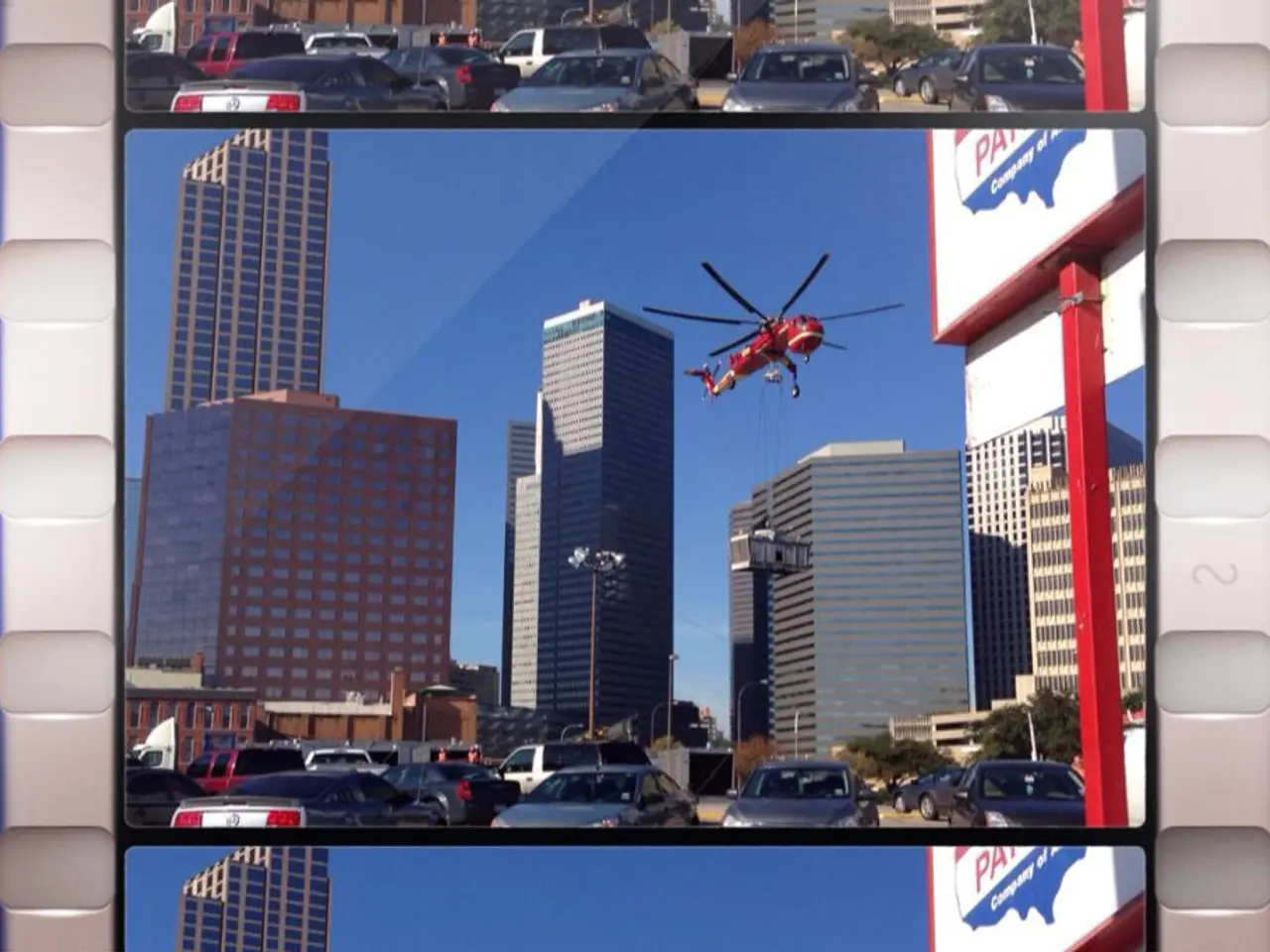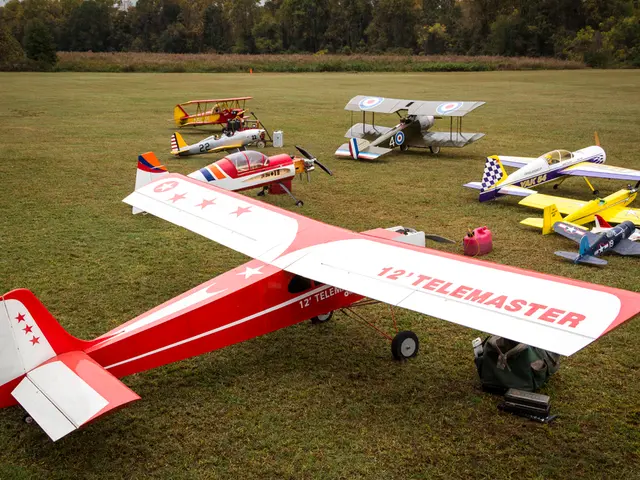Impact of Self-Contained Drone Systems Revolutionizing Drone Sector Industrywide
Drone-in-a-Box (DiaB) systems, such as DJI Dock and Skydio Dock, are transforming the way industries manage inspections, maintenance, and security. These innovative systems, integrated with a website's Drone Operations Center, allow for centralized management and automation of drone operations.
Current Applications
Public Safety and Emergency Response
In public safety, DiaB systems are revolutionizing operations through the concept of Drone as a First Responder (DFR). These drones provide immediate aerial surveillance and situational awareness in emergencies, aiding search and rescue, disaster assessment, and law enforcement operations without the need for human pilots on-site.
Critical Infrastructure Inspection and Maintenance
In critical infrastructure management, drones can autonomously inspect key assets and provide instant feedback on their condition, reducing downtime and preventing costly repairs. AI-enabled drones can even detect faults and trigger automatic maintenance workflows.
Security and Surveillance
DiaB systems are revolutionizing facility monitoring and protection by allowing drones to respond to incidents automatically. They can perform constant perimeter security and patrols at sensitive locations, often with payload swaps for cameras, LiDAR, chemical, or gas sensors depending on the mission.
Integration in Connected Ecosystems
DiaB systems become active nodes in IoT-enabled networks, seamlessly feeding data into maintenance, security, and digital twin systems to automate responses and decision-making. This integration enhances real-time situational awareness and operational efficiency.
Other Uses
Beyond public safety and infrastructure, applications for DiaB systems include cargo delivery, precision agriculture, military ISR, mapping, and surveying.
Benefits
Autonomy and Rapid Deployment
DiaB systems enable near-continuous operations with weatherproof pods that allow fully automated launch, mission execution, and landing without on-site human intervention.
Cost and Efficiency
Automating routine inspections and patrols reduces labor costs and minimizes human error risk while speeding up data collection and response times.
Real-Time Data and Integration
Instant alerts and automated workflows increase operational responsiveness and preventive maintenance.
Flexibility and Versatility
The ability to swap drone payloads remotely adapts the system to varied missions, providing flexibility and versatility.
Connectivity and Control
Using 4G/5G networks, such as Nokia’s Drone Networks, enables secure, resilient communications, real-time remote control, and comprehensive fleet management across large areas.
Market and Trends
The DiaB market is growing rapidly, valued at USD 2 billion in 2025 and expected to reach USD 9.2 billion by 2034 with a CAGR of 23.3%. Technological advances in AI, automation, wireless charging, and 5G connectivity are accelerating adoption.
In essence, Drone-in-a-Box systems bring autonomous, integrated, and flexible aerial capabilities that significantly enhance public safety operations, infrastructure monitoring, and security services by providing rapid, intelligent, and continuous data gathering and response.
- The integration of Drone-in-a-Box (DiaB) systems, like DJI Dock and Skydio Dock, with a website's Drone Operations Center, also allows for compliance management in various industries, ensuring all operations adhere to safety guidelines and regulations.
- In the realm of maintenance, autonomous drones can greatly benefit manufacturing facilities by performing regular, timely checks on equipment, thereby reducing equipment downtime and ensuring optimal safety and efficiency.
- To ensure the safe functionality of DiaB systems, regular software updates and technology checklists should be implemented as part of their management, addressing potential safety issues and enhancing overall system performance.
- The technology team responsible for the operations and maintenance of DiaB systems should ensure that the gadgets equipped on the drones, such as cameras, LiDAR, chemical, or gas sensors, are always in excellent condition and maintain a high level of safety compliance.
- Companies leveraging DiaB systems for their maintenance, security, and operations should prioritize having a dedicated team to manage these systems, ensuring appropriate training, adequate safety protocols, and ongoing technological advancements are considered for continuous improvement.
- As the awareness of DiaB systems and their widespread applications increases, partnerships and collaborations with technology providers, such as DJI, Skydio, Nokia, and others in the drone industry will become essential for continued advancement, extensive market penetration, and overall growth in the DiaB marketplace.




